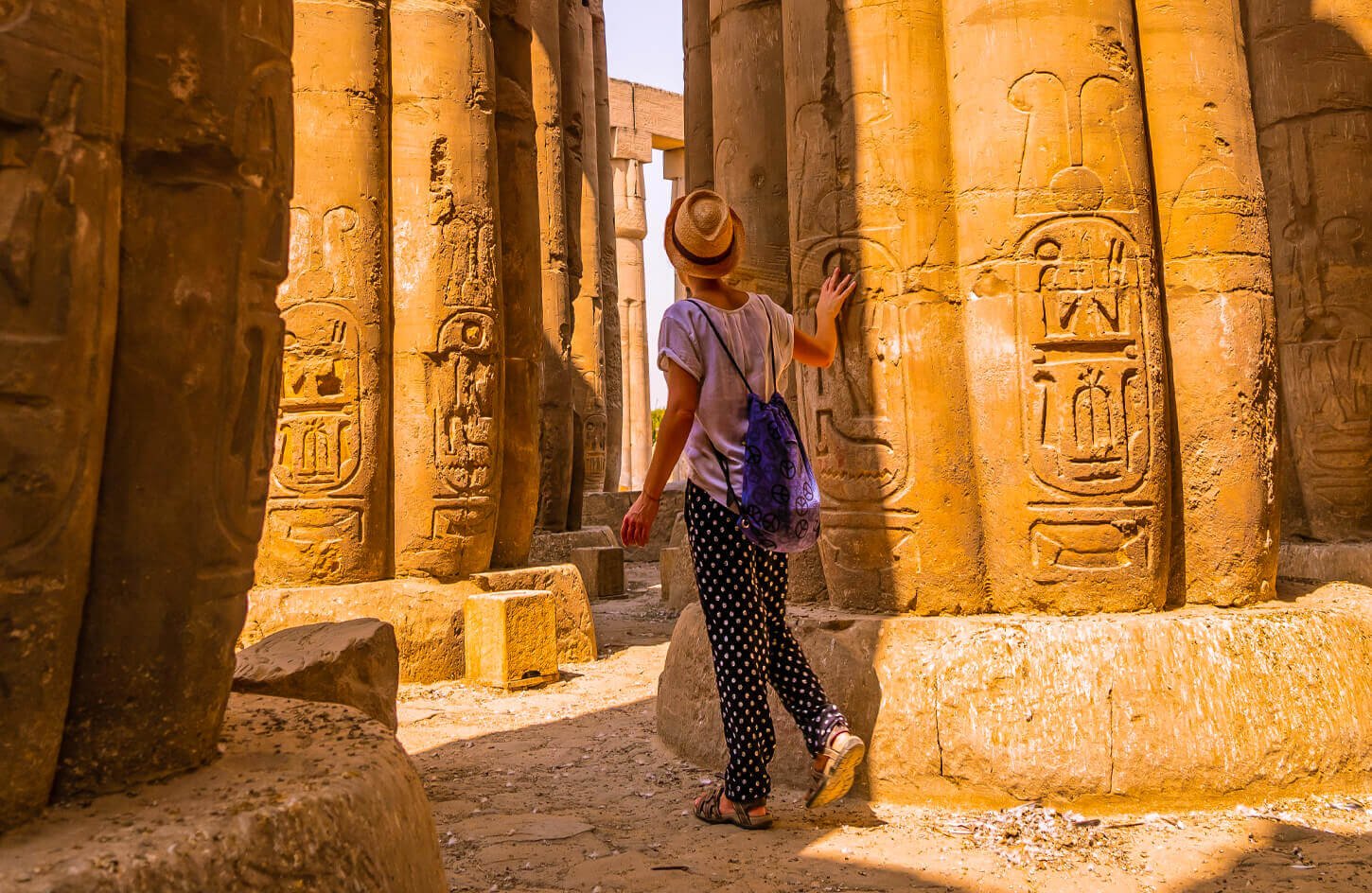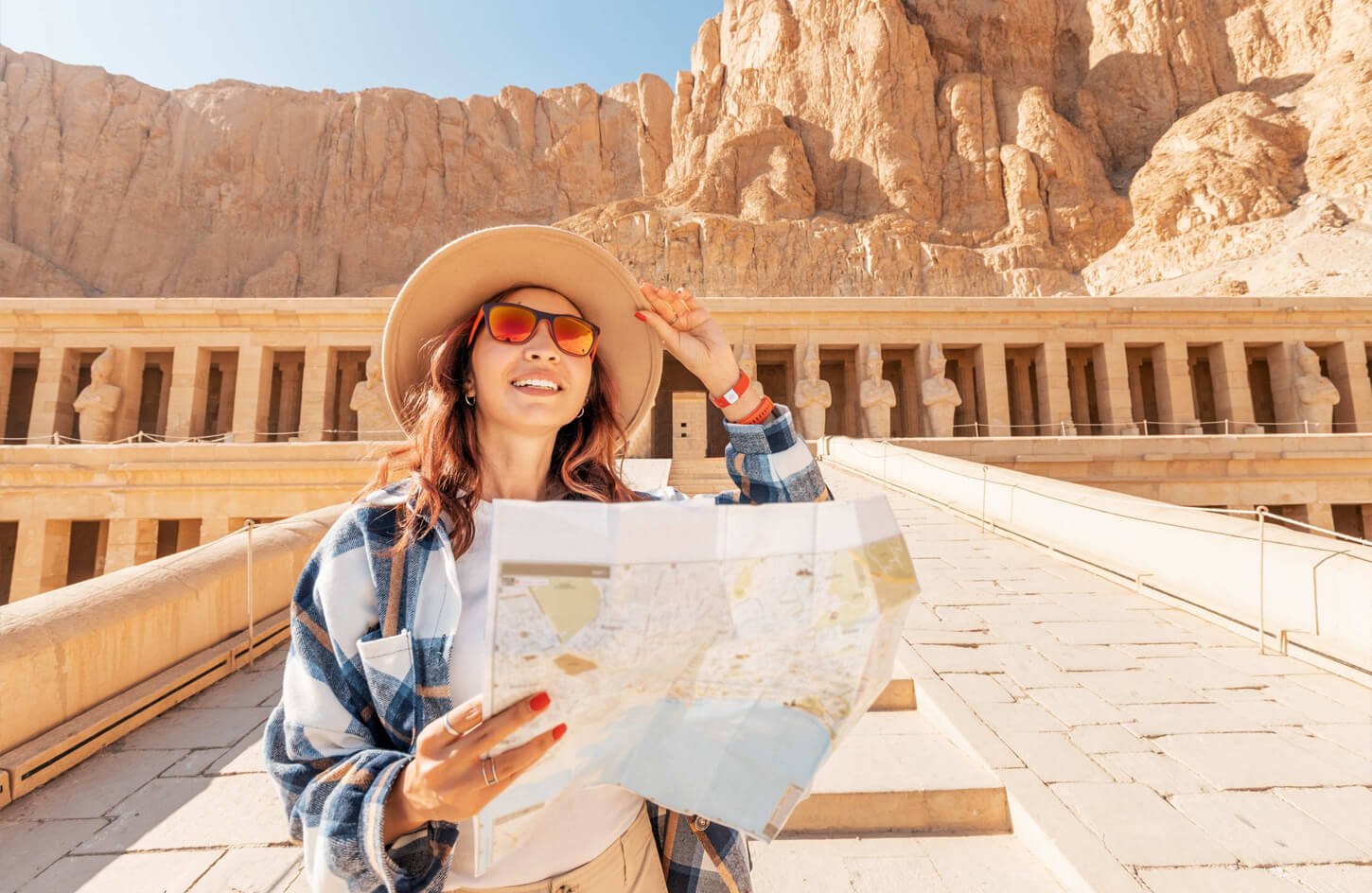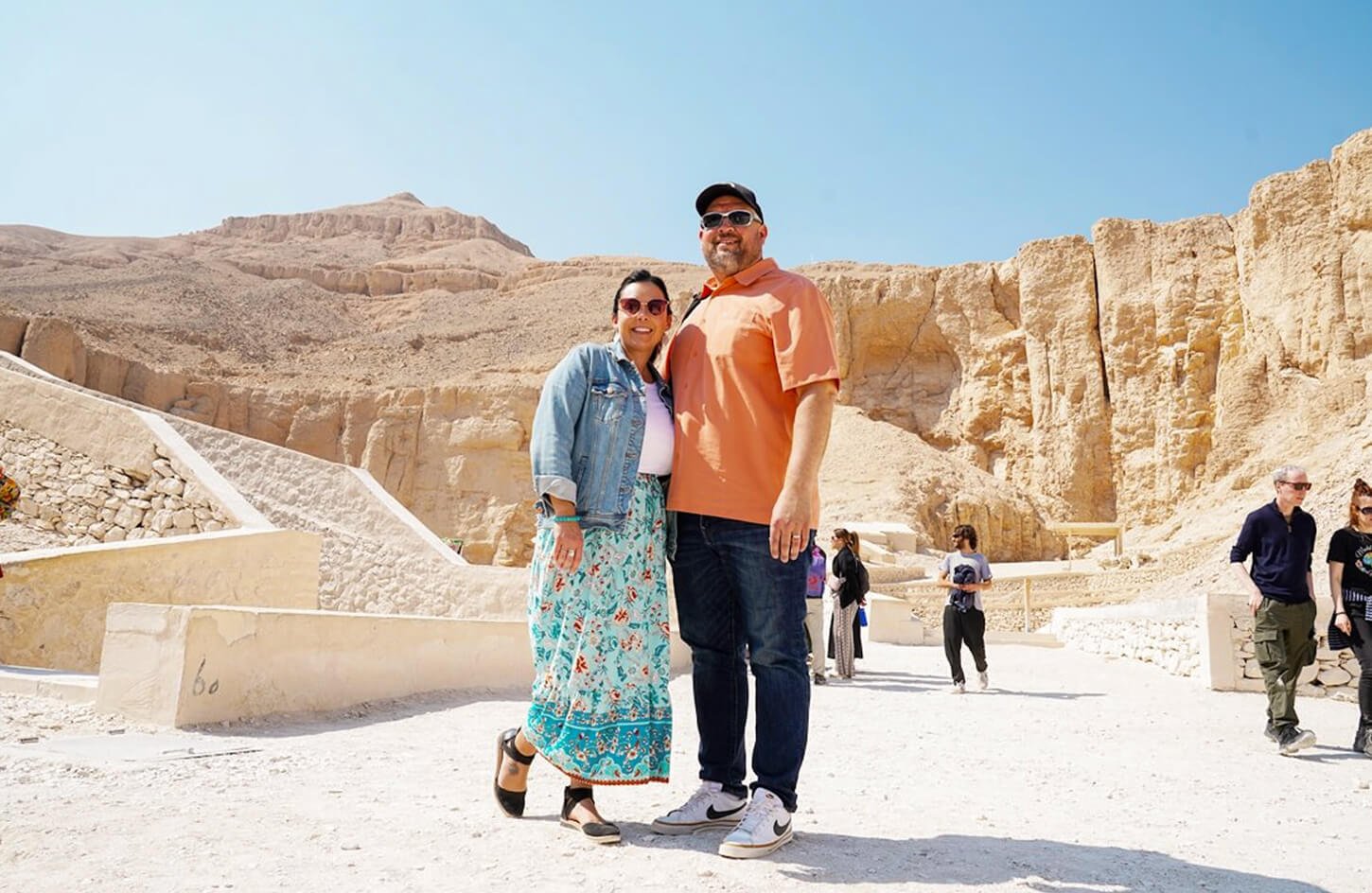Imagine walking through a city where history is all around you. The air is filled with tales of pharaohs and gods. You are in Luxor, a place full of ancient temples and tombs.
Luxor is a key archaeological site. It gives us a peek into ancient civilizations. The city’s history is seen in its luxuriant attractions, like the big temples and detailed tombs.
Planning a trip to Luxor? It’s a top spot for Egypt tourism. With so many historical sites, Luxor offers an experience you won’t forget. It’s a key stop on any Luxor travel guide.
The Ancient City of Luxor: What You Need to Know
Luxor, once known as Thebes, is full of history that still draws visitors. It was Egypt’s capital during the New Kingdom period. This made Luxor very important in the country’s past.
The Historical Significance of Luxor
Luxor’s history is filled with grandeur and legacy. To grasp its importance, we must explore its past.
Ancient Thebes and Its Role in Egyptian History
Ancient Thebes, or Luxor, was a city of great power and influence. It was Egypt’s capital during the New Kingdom period, a time of great prosperity. The city’s strategic location made it a center for politics, religion, and culture. It had many temples, tombs, and palaces that still stand today. These sites give us a peek into the lives of pharaohs and nobles.
From Ancient Glory to Modern Tourism
Over time, Luxor changed from an ancient capital to a modern tourist spot. This change has kept its historical sites intact while welcoming visitors worldwide. Today, Luxor showcases Egypt’s rich heritage, drawing travelers to its ancient ruins and landmarks.
East Bank vs. West Bank: Understanding Luxor’s Geography
Luxor is divided into two areas: the East Bank and the West Bank. Each has its own attractions and features.
The East Bank: City of the Living
The East Bank is home to Luxor’s modern areas, markets, and famous ancient sites. It was called the “City of the Living” because it was where people lived, worked, and worshipped. Key sites include the Luxor Temple and the Karnak Temple Complex, both key for those interested in Luxor’s ancient history.
The West Bank: City of the Dead
The West Bank is known as the “City of the Dead” because of its tombs, mortuary temples, and other burial sites. It houses some of Egypt’s most famous archaeological sites, like the Valley of the Kings and the Temple of Hatshepsut. The West Bank gives us a look into ancient Egyptian beliefs about the afterlife and their burial customs.
Planning Your Trip to Luxor, Egypt
Planning your trip to Luxor is key. Think about the best time to go and how to get there. Luxor is rich in history, so some planning makes your trip better.
Best Time to Visit Luxor
Knowing when to visit Luxor is important. The weather is hot and dry. The cooler months from October to February are the best.
Seasonal Considerations and Weather Patterns
Summer in Luxor is very hot, over 40°C (104°F). Winter is cooler but still warm during the day.
Peak vs. Off-Peak Tourism Seasons
Peak season (December to February) has more people and higher prices. Off-peak is quieter but some places might be closed.
How Many Days to Spend in Luxor
How long to stay in Luxor depends on what you like. For a quick trip, 2-3 days is enough. But for more history and culture, 4-5 days or more is better.

Getting to Luxor
Luxor is easy to reach by different ways.
By Air: International and Domestic Flights
Luxor International Airport (LXR) has flights from Egypt and some international places. You can fly from Cairo or other big Egyptian cities.
By Train, Bus, and Cruise Ship Options
Egyptian Railways has trains to Luxor from Cairo and other cities. Buses are also an option, but not as comfy. For a relaxing trip, take a Nile River cruise.
Visa Requirements and Entry Procedures
Before going to Luxor, know about Egypt’s visa rules. Many countries can get a visa at the airport. But, check with your local Egyptian embassy or consulate.
Complete Luxor, Egypt Guide to East Bank Attractions
The East Bank of Luxor is a journey through ancient Egypt’s history. You’ll see the Karnak Temple Complex and Luxor Temple. These sites are full of history and culture.
Karnak Temple Complex: The Ultimate Guide
The Karnak Temple Complex is huge and a must-see. It shows the power of ancient Egypt’s pharaohs.
Get a guide to learn about the complex. Wear comfy shoes and drink water because it’s big.
Must-See Features and Photo Opportunities
Don’t miss the Great Hypostyle Hall and the Sacred Lake. They are beautiful. Take pictures of the carvings and hieroglyphics.
Luxor Temple: Tips for the Perfect Visit
Luxor Temple is in the city’s heart. It’s famous for its architecture and history.
Daytime vs. Evening Visits
Daytime visits show off the temple’s details. Evening visits are magical with the temple lit up.
Historical Highlights Not to Miss
See the Avenue of Sphinxes and the Obelisk of Ramses II. They show the pharaoh’s power.
Museums of Luxor
Luxor has many museums with artifacts from ancient sites. The Luxor Museum and Mummification Museum are top picks.
Luxor Museum: Ancient Artifacts Explained
The Luxor Museum has a great collection. It includes mummies, sarcophagi, and temple reliefs.
Mummification Museum: Understanding Ancient Practices
The Mummification Museum shows how ancient Egyptians mummified. It has mummies, coffins, and funerary artifacts.
West Bank Exploration: Tombs and Temples
When you cross the Nile River to Luxor’s West Bank, you enter ancient Egypt’s world. This area is famous for its tombs and temples. They help us understand ancient Egyptian funerals and royal history.
Valley of the Kings: A Visitor’s Guide
The Valley of the Kings is a key spot on the West Bank. It’s where pharaohs of the New Kingdom were buried. Here are some tips for your visit:
Key Tips for Visiting the Valley of the Kings:
- Plan your visit based on the heat and what you want to see.
- Wear comfy shoes since you’ll be walking a lot.
- Don’t forget water and sun protection.
Selecting Which Tombs to Visit
There are many tombs to see. Pick the ones that interest you the most. Some tombs are more important than others, and your ticket choices will vary.
Photography Rules and Special Tickets
Know the photography rules in the tombs. Some places have rules. You might need special tickets for certain tombs or for using cameras and other gear.
Valley of the Queens and Royal Tombs
The Valley of the Queens is another important site. It’s where the wives of pharaohs were buried. The tombs here show us what life was like for these royal women.
Temple of Hatshepsut: Egypt’s Female Pharaoh
The Temple of Hatshepsut is a stunning architectural wonder. It’s dedicated to one of Egypt’s few female pharaohs.
Architectural Highlights and Historical Context
The temple’s design shows Hatshepsut’s innovative spirit. Knowing its history makes the visit even more special.
Best Times to Photograph This Stunning Temple
The best times for photos are early morning or late afternoon. The light is softer then, making the temple’s details stand out.

Other West Bank Marvels
There’s more to see on the West Bank than just the Valley of the Kings and the Temple of Hatshepsut.
Colossi of Memnon
The Colossi of Memnon are two huge stone statues of Pharaoh Amenhotep III. They stand at the entrance to his temple.
Ramesseum and Medinet Habu Temples
The Ramesseum is Ramses II’s temple. Medinet Habu is Ramses III’s. Both offer insights into their pharaohs’ reigns.
Tombs of the Nobles and Workers’ Village
The Tombs of the Nobles give us a peek into the lives of ancient Egypt’s nobility. The Workers’ Village shows us the lives of those who built the tombs.
How to Create the Perfect Luxor Itinerary
Creating a great Luxor itinerary is all about matching your interests and schedule. Luxor has lots of history, culture, and natural beauty. It has something for every traveler.
One-Day Whirlwind Tour
Even with just one day, you can see Luxor’s beauty. Start at the Karnak Temple Complex, one of the biggest in the world. Then, visit the Luxor Temple to see ancient Egyptian architecture.
- Visit Karnak Temple Complex
- Explore Luxor Temple
- Take a felucca ride on the Nile River
Explore Luxor’s Rich History and Majestic Monuments on a Full-Day Tour
Two-Day Balanced Itinerary
With two days, you can see both the East and West Banks. Day one is for the East Bank’s temples and museums. Day two is for the Valley of the Kings and Temple of Hatshepsut on the West Bank.
- Day 1: East Bank attractions like Karnak and Luxor Temples
- Day 2: West Bank attractions like Valley of the Kings and Temple of Hatshepsut
Three-Day Comprehensive Experience
Three days let you enjoy Luxor at your pace. You can visit nearby sites like Abydos or Dendera. This time also lets you see any site again if you want.
- Explore Luxor’s main attractions
- Take a day trip to nearby historical sites
- Enjoy a leisurely felucca ride or a hot air balloon experience
Want to make the most of your trip? Discover the top things to see with our Trip to Luxor highlights in 3 days!
Four+ Days: Including Day Trips and Hidden Gems
Four or more days let you dive deep into Luxor’s history and culture. You can go on day trips to Esna, Edfu, or Kom Ombo. You can also check out local markets, try traditional food, or just relax by the Nile.
- Day trips to Esna, Edfu, or Kom Ombo
- Explore local markets and cuisine
- Relax with a leisurely activity like a Nile cruise or a visit to a local farm
Chik our tour
Planning your trip to Luxor? Knowing the practical tips can make your trip better. Luxor is full of history and attractions. You’ll need some insider knowledge to get around.
Getting Around Luxor
Luxor has many ways to get around, for all budgets and tastes. Knowing these can make your travel easier.
Taxis, Ferries, and Horse Carriages
Taxis are easy to use in Luxor, but agree on the price first. Horse-drawn carriages offer a fun way to see the sights. Ferries are key for crossing the Nile between the East and West Banks.
Hiring Guides and Drivers
Hiring a guide or driver can make your trip special. They know a lot about Luxor’s history and culture. Make sure to agree on the price and check their credentials.
Where to Stay in Luxor
Choosing the right place to stay in Luxor can really improve your trip. The city has many options for different budgets and tastes.
East Bank vs. West Bank Accommodation
The East Bank is close to main attractions like Karnak and Luxor Temples. The West Bank is better for Valley of the Kings and tombs. Think about your plans when choosing where to stay.
Luxury Options to Budget Stays
Luxor has something for everyone, from luxury hotels to budget guesthouses. You can find the perfect place for you. Book early, as it gets busy during peak seasons.
Dining Options in Luxor
Luxor is a food lover’s dream, with Egyptian and international dishes. Knowing where to eat can make your meals better.
Traditional Egyptian Cuisine to Try
Try koshari, falafel, and shawarma. For real Egyptian food, eat at local restaurants.
Restaurant Recommendations and Food Safety
Choose restaurants that locals and tourists like. Make sure your food is safe to eat. Drink bottled water to stay healthy.
Shopping for Souvenirs
Luxor’s markets and souks are famous for souvenirs. Being ready can make shopping fun.
The souks can be busy and confusing. Take your time and ask for help if needed.
Bargaining Tips and What to Buy
Bargaining is common in Luxor. Start low and be ready to negotiate. Look for crafts, papyrus, and alabaster as gifts.
Health, Safety, and Cultural Etiquette
To have a great time in Luxor, knowing the local culture and safety tips is key. Learning about these things will make your trip better and show respect for the place.
Staying Healthy in Luxor
Keeping healthy in Luxor means taking a few steps. The weather and surroundings can be tricky, but you can stay safe.
Water Safety and Heat Protection
It’s very important to drink lots of water in Luxor’s heat. Use bottled or filtered water to stay safe. Also, protect yourself from the sun with sunscreen, hats, and sunglasses.
- Drink plenty of bottled water all day.
- Avoid tap water or ice.
- Use sunscreen with a high SPF rating.
- Wear light, breathable clothes to stay cool.

Medical Facilities and Travel Insurance
Luxor has places for medical help if you need it. But, it’s best to have travel insurance that covers big medical costs.
- Get travel insurance before you go.
- Keep a list of emergency numbers, like your insurance.
- Know where the nearest hospitals or clinics are.
Safety Considerations for Travelers
Luxor is mostly safe, but there are things to watch out for to stay safe.
Common Scams and How to Avoid Them
Watch out for scams that target tourists. Things like overly friendly people or deals that seem too good to be true.
- Be careful of strangers with offers.
- Check if tour operators and guides are real.
- Don’t carry too much cash.
General Safety Precautions
Take steps to keep yourself and your stuff safe.
- Keep valuables safe and use hotel safes.
- Be aware of your surroundings, even in crowded places.
- Don’t travel alone at night.
Respecting Local Customs and Traditions
Luxor is full of history and culture. It’s important to respect local customs for a good visit.
Appropriate Dress and Behavior
Wear modest clothes, like covering your shoulders and knees, when visiting temples or mosques. Also, remove your shoes when asked and avoid showing too much affection in public.
- Dress conservatively, covering your shoulders and knees.
- Remove your shoes when entering temples or homes.
- Avoid public displays of affection.
Photography Etiquette and Interacting with Locals
Be respectful when taking photos, like asking permission, and be polite when talking to locals. This makes your visit better and helps you make friends.
- Ask permission before taking someone’s photo.
- Be respectful and polite when interacting with locals.
- Learn a few basic Arabic phrases to show respect.
Unique Experiences in Luxor
Luxor is full of unique experiences. You can find thrilling adventures or peaceful cruises. It has something for everyone, whether you love history, seek adventure, or want to relax.
Hot Air Balloon Ride at Sunrise
A hot air balloon ride over Luxor at sunrise is special. You’ll see the city’s ancient landscapes and the Nile River from above.
Photography Tips from Above
Here are some tips for taking photos from the hot air balloon:
- Use a camera with good image stabilization to reduce blur.
- Shoot in RAW format to capture more detail.
- Take advantage of the early morning light for the best results.
Nile River Experiences
The Nile River is key to Luxor. It offers many experiences to enjoy its beauty and history.
Sunset Felucca Sails
A felucca sail on the Nile at sunset is a must-try. You’ll see banana groves and villages, enjoying the calm.
Dinner Cruises and Longer Journeys
Try a dinner cruise or a longer Nile journey. These offer local cuisine and live entertainment for a memorable evening.
Sound and Light Shows
Luxor’s Sound and Light Shows are amazing. They use technology to bring the city’s history to life at night.
Abydos and Dendera Temples
See the Abydos Temple and Dendera Temple. They are well-preserved and offer a glimpse into Egypt’s past.
Desert Adventures and Oasis Visits
For adventure, try a desert safari or visit Kharga Oasis or Paradise Valley. They show Egypt’s diverse landscapes.
Conclusion: Making the Most of Your Luxor Journey
As you get ready for your trip to Luxor, Egypt, you’re starting an adventure. You’ll see thousands of years of history, culture, and beauty. This guide will help you enjoy Luxor’s landmarks, traditions, and Egyptian hospitality.
Luxor is full of amazing sights, from temples to tombs. Being prepared will help you enjoy it more. So, take a deep breath, be open to new experiences, and make memories that will last forever.

